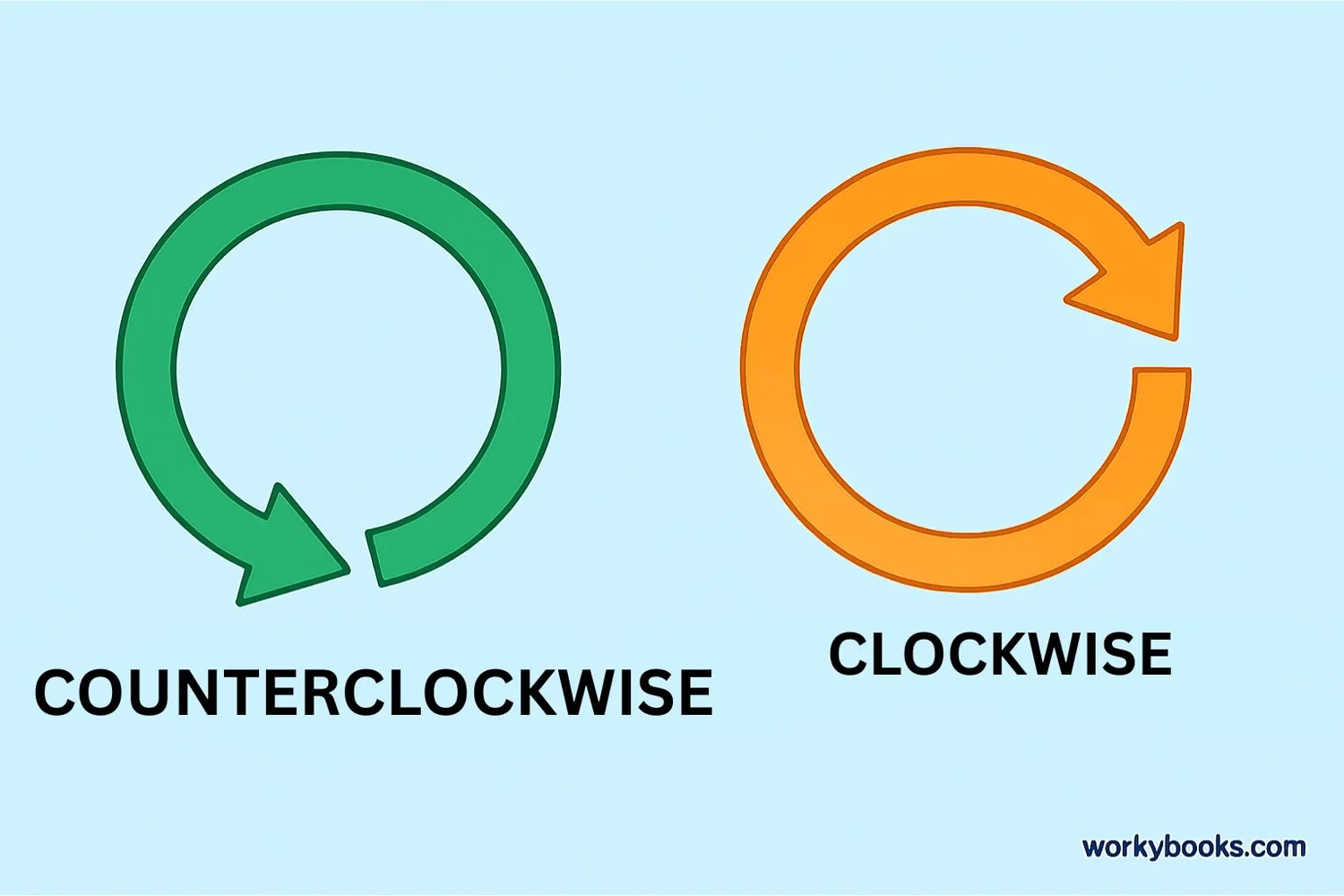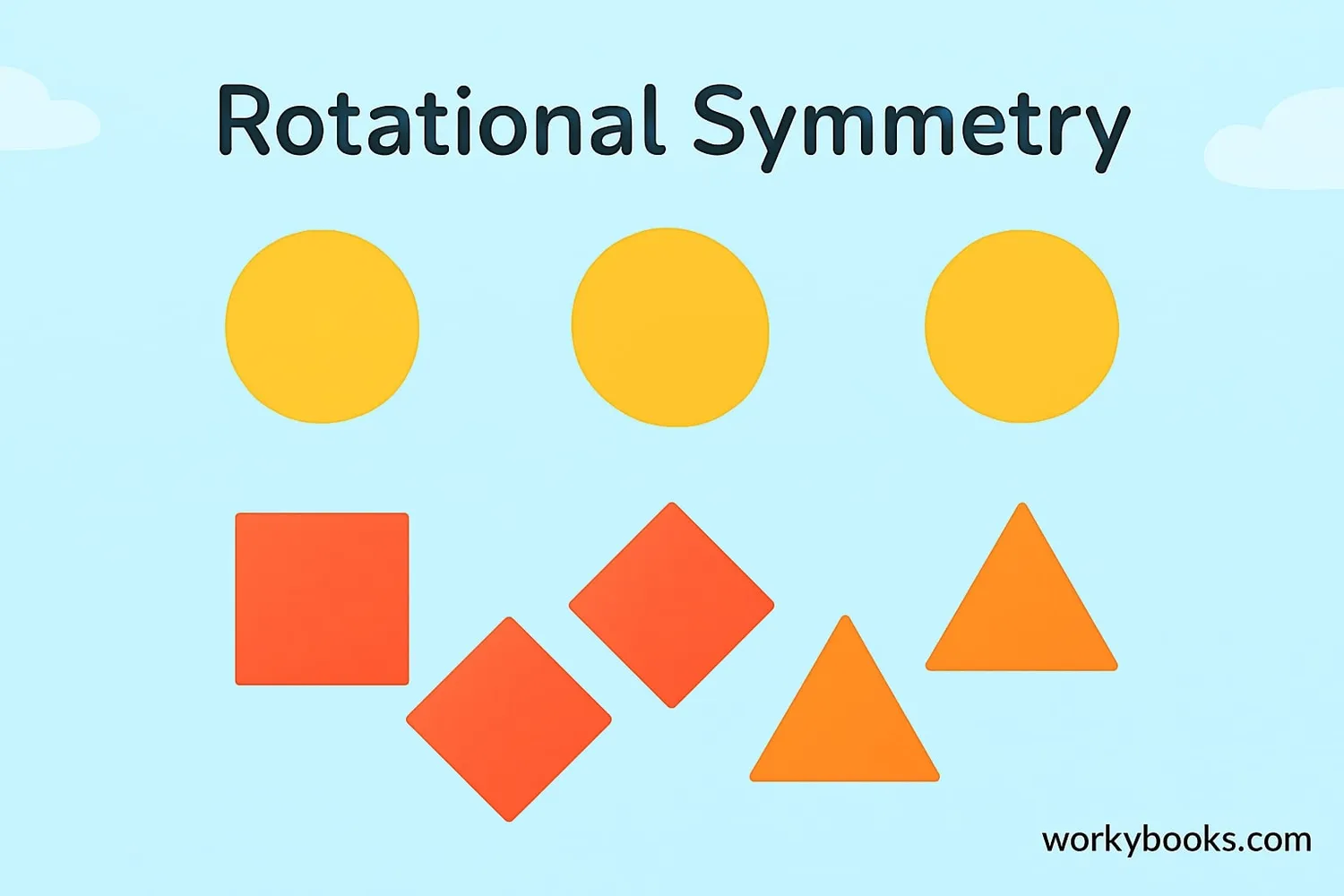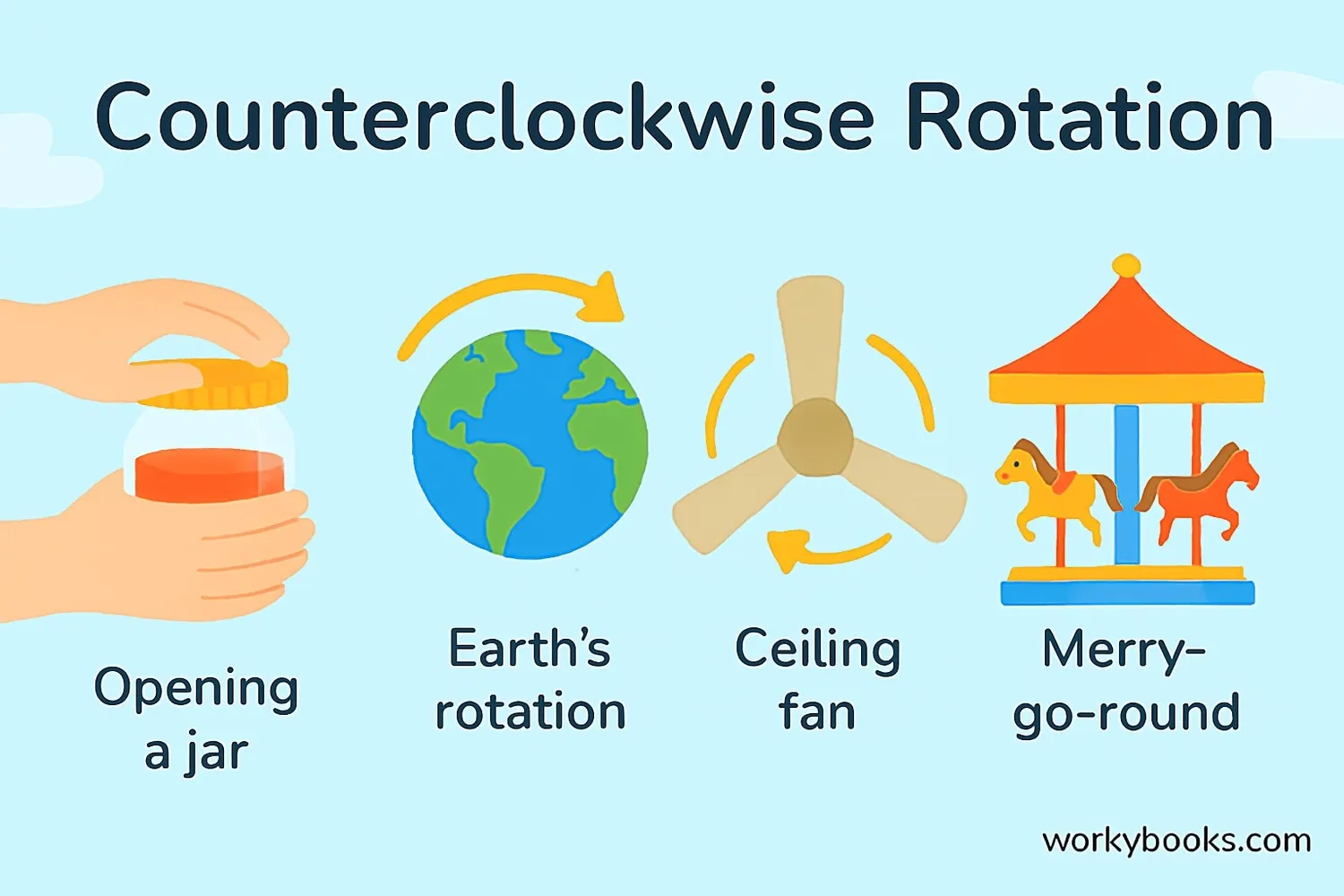Counterclockwise - Definition, Examples, Quiz, FAQ, Trivia
Learn about rotation direction and symmetry with simple explanations and practice activities
What is Counterclockwise?

Counterclockwise means turning in the opposite direction to the way the hands of a clock move.
Imagine looking at a clock on the wall. The hands move from 12 to 1 to 2, and so on until they return to 12. This movement is called clockwise.
Now, imagine moving in the opposite direction - from 12 to 11 to 10, and so on. This is called counterclockwise.
Counterclockwise rotation is also known as anticlockwise rotation in some countries. It's an important concept in math, science, and everyday life.
Key Concept
Counterclockwise is the direction opposite to how clock hands move. It's used to describe rotation directions in math and science.
Counterclockwise vs. Clockwise

Understanding the difference between clockwise and counterclockwise rotation is important. Let's compare them:
| Direction | Description | Example |
|---|---|---|
| Clockwise | Moves in the same direction as a clock's hands | Screwing a lid onto a jar |
| Counterclockwise | Moves opposite to a clock's hands | Unscrewing a jar lid |
To remember which is which, think:
- Clockwise = "Righty tighty" (turning right to tighten)
- Counterclockwise = "Lefty loosey" (turning left to loosen)
Remember
Counterclockwise is the opposite direction of a clock's hands. If you face a clock and turn to your left, that's counterclockwise direction.
Rotational Symmetry

Rotational symmetry is when a shape looks exactly the same after being rotated part of the way around.
Counterclockwise rotation is often used when testing rotational symmetry. A shape has rotational symmetry if it matches itself when rotated counterclockwise by a certain amount.
Examples:
- A circle has rotational symmetry at every angle
- A square looks the same when rotated 90°, 180°, or 270° counterclockwise
- An equilateral triangle looks the same when rotated 120° or 240° counterclockwise
The number of times a shape matches itself during a full 360° counterclockwise rotation is called its order of rotational symmetry.
Symmetry Tip
To test rotational symmetry, rotate the shape counterclockwise and see at what angles it looks identical to the original position.
Real-World Examples

Counterclockwise rotation appears in many everyday situations:
1. Opening containers: Most jar lids and bottle caps loosen when turned counterclockwise.
2. Earth's rotation: The Earth rotates counterclockwise when viewed from above the North Pole.
3. Fans and propellers: Some ceiling fans rotate counterclockwise to create a cooling breeze in summer.
4. Merry-go-rounds: Many playground merry-go-rounds turn counterclockwise.
5. Sports: In figure skating, many spins and jumps rotate counterclockwise.
6. Water draining: In the Northern Hemisphere, water often drains counterclockwise due to the Coriolis effect.
Example Tip
Next time you open a bottle or jar, notice that you're turning it counterclockwise!
Rotation Quiz
Test your understanding of counterclockwise rotation with this 5-question quiz. Choose the correct answer for each question.
Frequently Asked Questions
Here are answers to common questions about counterclockwise rotation:
Rotation Trivia
Discover interesting facts about rotation and symmetry:
Ancient Clocks
The earliest sundials in the Northern Hemisphere cast shadows that moved clockwise. This is why modern clock hands were designed to move in that direction.
Coriolis Effect
The direction water drains (clockwise or counterclockwise) depends on which hemisphere you're in. This is due to the Earth's rotation and the Coriolis effect.
Planetary Rotation
Most planets in our solar system rotate counterclockwise when viewed from above their North Poles. Venus is an exception, rotating clockwise very slowly.
Sports Rotation
Most athletes (about 90%) prefer to rotate counterclockwise when performing spins, whether in figure skating, diving, or gymnastics.


